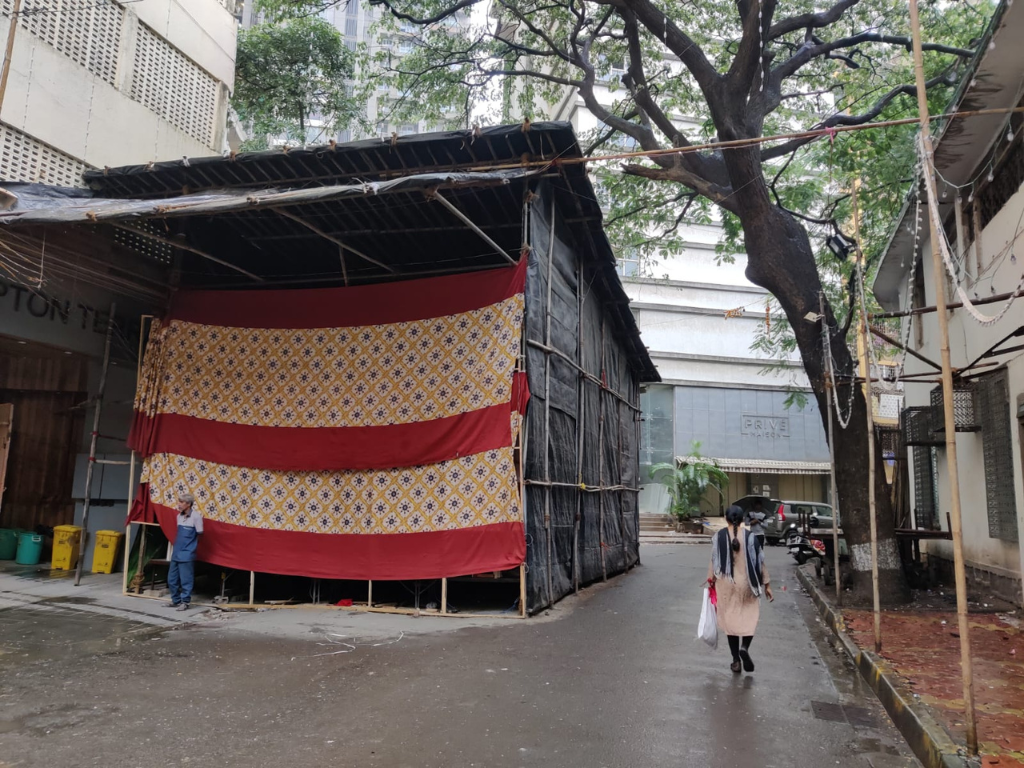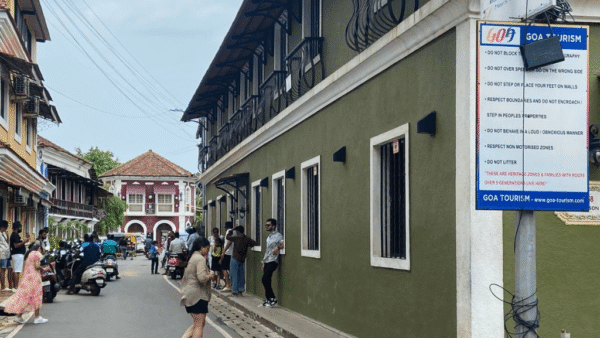“Streets in cities serve many purposes besides carrying vehicles, and city sidewalks—the pedestrian parts of the streets—serve many purposes besides carrying pedestrians…Streets and their sidewalks, the main public places of a city, are its most vital organs. Think of a city and what comes to mind? Its streets. If a city’s streets look interesting, the city looks interesting; if they look dull, the city looks dull.”
American urbanist Jane Jacobs, quoted above, was keenly aware of the importance of streets in the lives of cities and of people. Others, like Jacobs, have reflected on the vital role that streets play in the functioning of cities and in the lives of millions every day.
Streets came into being as people built their settlements along accesses. Streets were the face of settlements and important social spaces where people assembled, met, loitered, walked, yelled, protested, discussed politics, held celebrations. As pluralist spaces, streets provided a sense of freedom and liberty to people, mostly free access too. As open spaces for social and cultural functions, they formed the beating heart of community life. Streets allowed the expression of the relationship between people, also between people and their place.
Along streets were work and living spaces. Shops, workshops, and displays opened into a street while families lived on upper floors in mixed use areas. In this habitation, people knew each other. A deep sense of community evolved, decisions were mostly taken through collective engagement and in the larger interest of the community. Such street-based neighbourhoods reflected social cohesion and inclusiveness despite the cultural diversity of people, though sometimes differences too.
Streets were also highly effective political spaces where open dialogues, political events, and marches and inspiring speeches were possible. Streets provided the opportunity for a variety of occupations commonly referred to as “informal” though these constituted an intrinsic and large part of a city’s economy.
Streets were, thus, the sutradhars of individual and community life, and the first unit of a neighbourhood. Streets are not roads, they are more than roads.
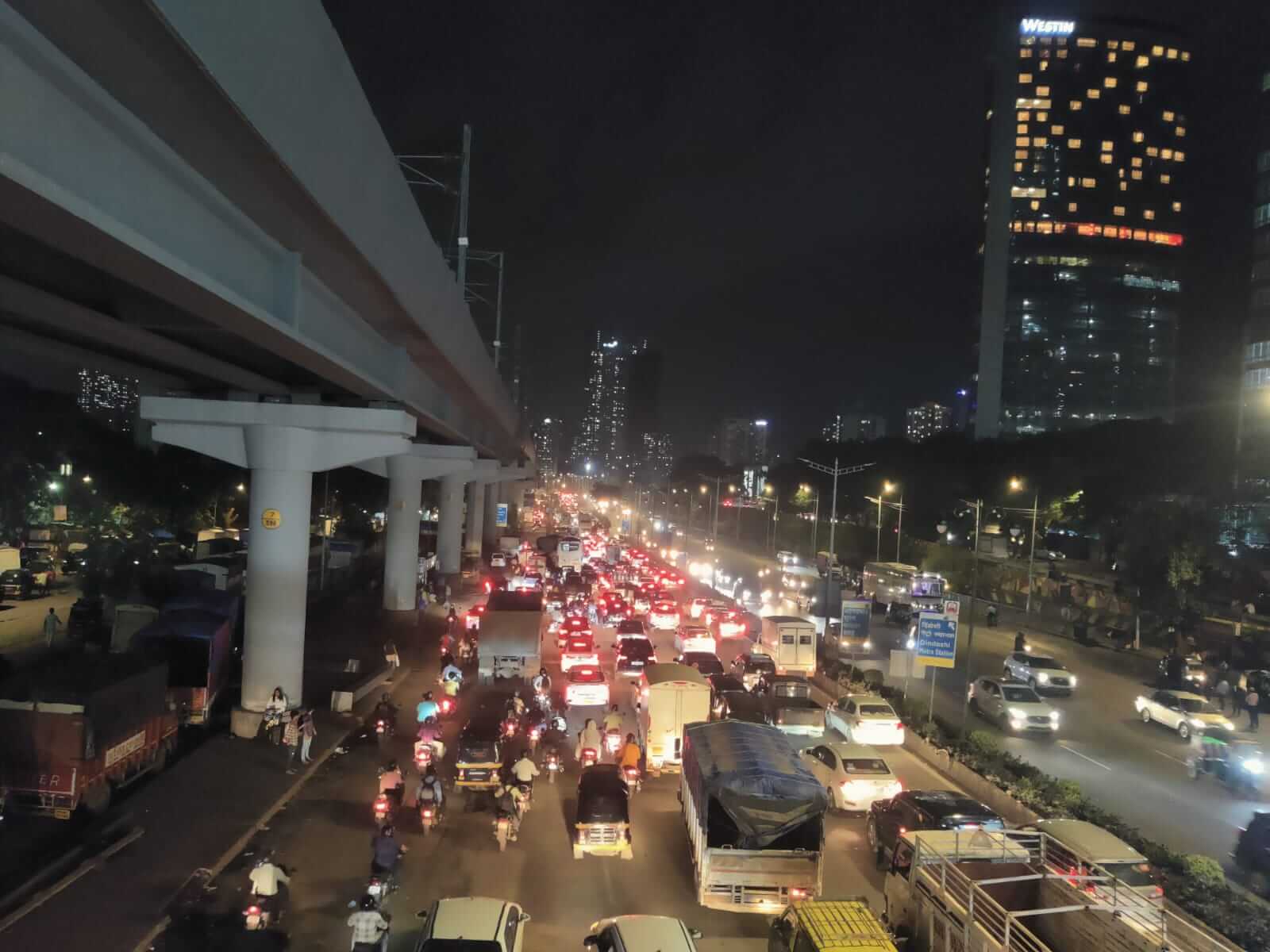
Photo: Jashvitha Dhagey
The ‘problem’ with roads
Streets are for people, while roads are for transportation. Roads are spaces primarily for vehicles to pass, carriageways for automobiles that want to race between destinations. Roads are more like conveyor belt-like systems to transport people and goods. It can be said that roads are the outcome of a city economy driven by and dependent on automobiles which require carriageways without ‘obstacles’ such as people and life on them. In our cities, new roads are being constructed, including the Coastal Road in Mumbai, for smoother vehicular movement showing the primacy given to vehicles over people.
On roads, people and people’s presence matter the least. In the prevailing town and city planning exercises determined by privatisation, consumption and a single-minded financial turnover objective, roads are planned and built, and streets are made into roads, often defaced by authoritarian bulldozer regimes in the process. The language we use and expressions we have to convey our perception of people and spaces have significantly changed with the prevailing city making process. The idea of streets is less talked about in this planning order; there are only roads.
In this planning, private transport is given priority over public transport, resulting in roads being expanded in many ways – roads over streets, under roads, double-decker roads, flyovers, under-passes, tunnels. Roads like the Coastal Road are built upon land filling which disrupt or erase sensitive coastal edges and diverse natural areas such as wetlands, mangroves, and tree cover. Road expansion projects have led to demolitions and violent evictions of settlements of poor people in blatant violation of human rights and their right to the city. This process of building road-based cities not only ignores but also decimates community and environmental interest. Some of these roads then have colourful decorative lights as part of ‘beautification programme’.
This road-based city planning also divides housing, predominantly based on class. Houses for the affluent are built along wider and scenic main roads for ease of their movement in cars while houses for less privileged are farther from main roads. Segregation of housing and ghettoisation of working people in slums and other informal settlements then becomes the ‘normal’. Localities then get defined on class basis with unequal standards of essential services. Storm water drains, pavements for safe walking, and adequate lighting are compromised.
The road-based city planning supports, and in turn is promoted by, the market that control and regulates the housing supply in cities. The road network becomes the symbol of a city’s development. Roads are now under surveillance where loitering is frowned upon or checked by the ubiquitous private security guards and the police.
Power of the street
The road-based planning is far from a street-based neighbourhood plan. French sociologist Henri Lefebvre, writing immediately after the events of May 1968 in Quartier Latin, Paris, noted that streets have the power to shake up societies, even if momentarily. In Lefebvre’s perception, the street is more than for circulation only because “the street is where movement takes place, the interaction without which the urban life would not exist, leaving only separation, a forced and fixed segregation”. The phenomenon of segregation in cities is not incidental, but by plan.
The nature of streets reflected the identity of the community, and vice-versa. A complex web of streets led to the formation of towns. Streets evolve(d) with evolving communities, their politics and aspirations. With more roads and road-like nature imposed on streets, streets as valuable, even powerful or transformative, public space is on the decline. In congested poorer areas of cities, where housing is densely packed together, streets and common areas become extensions of homes for many to breathe freely or meet friends. This minimal open space is also under threat as roads discourage loitering people.
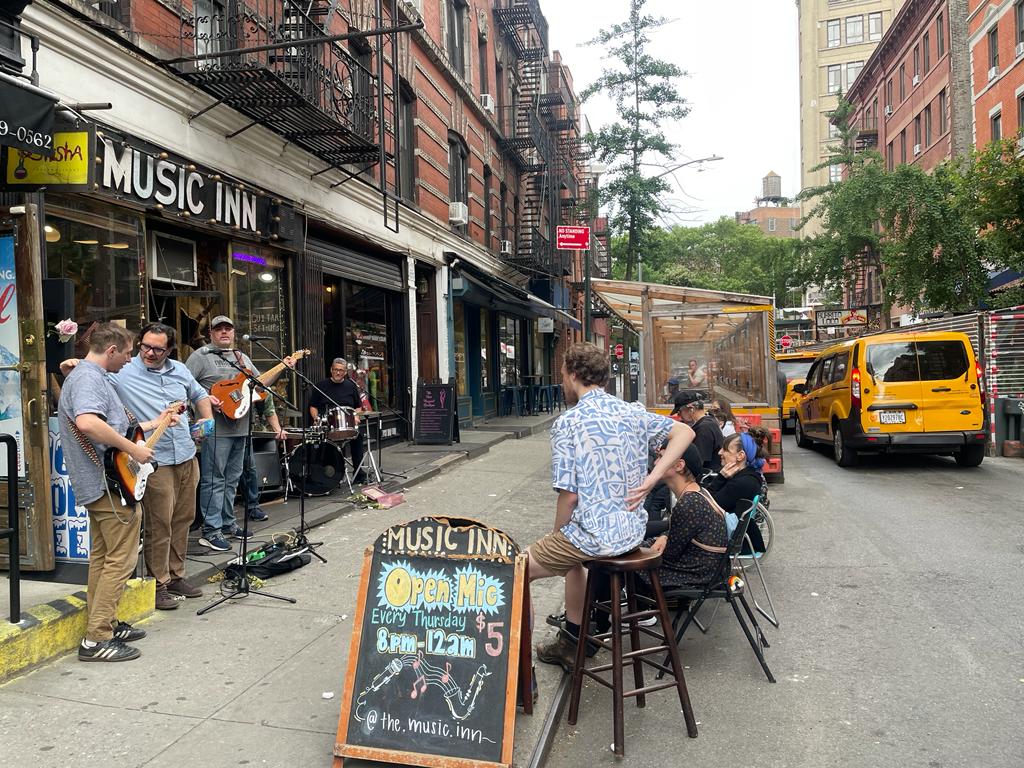
The prevailing city-making idea breaks down cohesive social structures, polarises people, and arrests the possibility of forming a community in a neighbourhood.
The reflection of social and political fragmentation of people and places through planning of cities are, in fact, a reflection of caste, religion, and faith divides which successive governments follow. These break down people’s associations and neutralise democratic rights of people and movements.
The way roads are planned and built also reflects a fracture between people and planning. They are not built with public consultation or people’s inputs, their design and form are unilaterally decided by city’s administrators who are custodians of public property and should be answerable to people. They instead represent the interests of contractors and private agencies who argue for more space for cars, plan and execute mega road projects on large-scale contracts which destroy the neighbourhood fabric and diminish a vital public space.
Street economy
In cities, streets are the space and opportunity for various occupations. Mumbai’s post-liberalisation era has seen informal work grow exponentially to constitute a large majority of the total jobs in the city. These are on streets but seen as impediments to traffic movement. It is also strange that they are considered informal and increasingly replaced by big merchants who turn streets into a mega display for consumption. While these flourish, street vendors or occupants are constantly attacked, their meagre possessions confiscated or destroyed under the guise of road discipline and vehicular movement. Importantly, street occupants provide a variety of shopping opportunities to those who cannot afford the high-end shops. As the road-based city-making has become entrenched, areas that once were bustling with street life have been stripped of it. This has been replaced by shops bundled together in a gated mall with a controlled and regulated environment where even open spaces are put under technological and human surveillance. Streets promoted mixed-use buildings which have given way to exclusive zoning. In fact, the time-evolved identity of people and places are rudely, often violently, erased from the face of the city to make way for a uniform, monotonous and “internationalised” or “globalised” city model.
Environmental consequences
Vehicles dominating the roads mean toxic emissions which hit our lungs causing major respiratory diseases besides other ailments. The road-driven planning, in most other cities, has led to the emergence of large multi-level car parking structures adjoining the roads. Architects have been busy creating new expressions of these embellished car-filled mono-blocks. A new sense of art-aesthetics characterises these roads and defines the new landscape of cities.
To conceal the car park floors, which make the road below dead, eco-measures such as green walls or vertical gardens are adopted and turned into an architectural style. They do little for the local environment but have been theorised by sophisticated designers for other buildings too. In this model of roads, people merely move in motorised transport between places, getting out of a road as fast as they can, and disappearing into their respective lavish holes in the sky built above the multi-storied mono-parking blocks. They have little to no relation with the road itself.
The idea of “eyes on the streets”, as Jane Jacobs had said, is considered a part of an archaic mindset. The space to walk on roads is seen as an unnecessary space. And these conditions together dissuade people from loitering or walking on the road, engaging with each other. Building more roads for vehicle movement and providing more parking has contributed to unprecedented environmental consequences too, the likes of which were never experienced before.
Many roads are zones of high pollution and heat, especially when the tree cover along a road is reduced for its expansion. The need for more parking in buildings has led to the condonation by the government of the open spaces policy. In fact, in Mumbai, the municipal corporation has prepared a tariff card which states the payment of a “premium” to obtain a deficiency in the provision of mandatory open spaces. In other words, the corporation is not just violating the law but is openly selling people’s right to open spaces required for the health and well-being of all. The consequences on people’s health and on the environment are monumental. Cities are both producers of emissions and the worst affected by them. The need to grow more trees, develop urban forests and protect open spaces has never been greater but these are sacrificed to make roads, if not buildings.
The government’s planning should be to expand affordable, accessible, and efficient public transport in various modes which can reduce dependency on private motorised transport. This would reduce the road-building as well as need for parking spaces. In 2012, the Open Mumbai Plan, which I showed in a public exhibition, had proposed the idea of converting some roads to streets across Mumbai with a system of one-ways with case studies and illustrations. The Equal Streets movement, a coalition of many people’s organisations, demonstrated the making of car-free streets every Sunday in 2014-15. Sadly, city authorities have gone the other way expanding road areas and building a maze of flyovers which only bring in more cars and create traffic congestion.
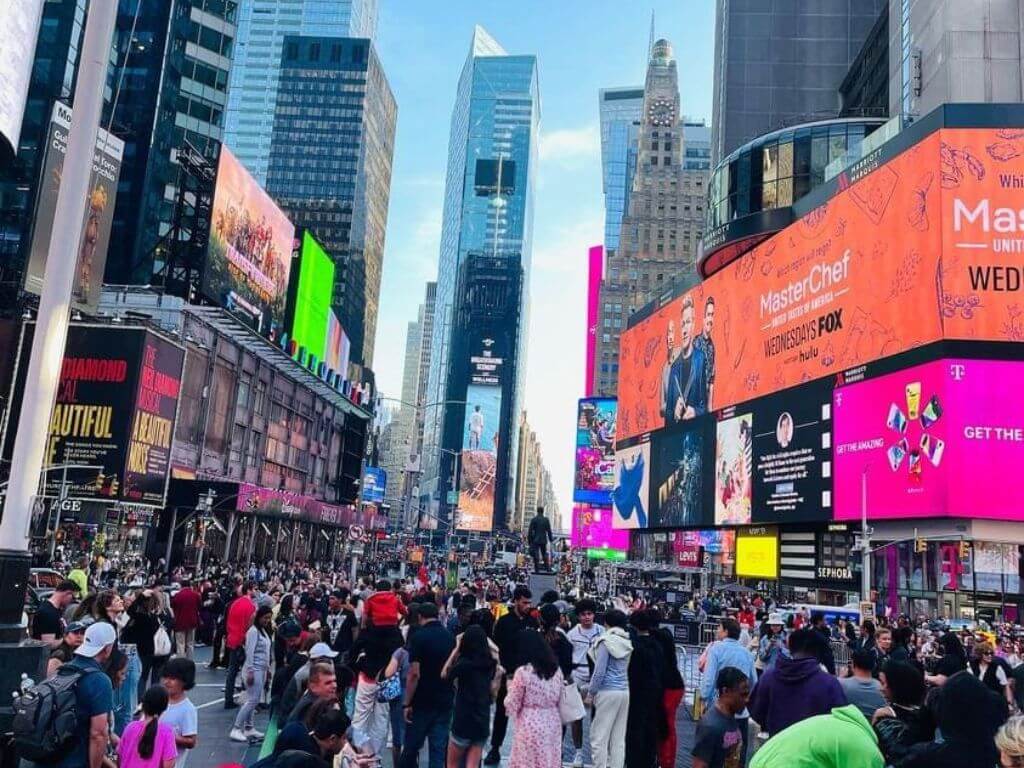
Photo: Abhay Singh
The New York story
India’s cities could learn from New York. Its downtown Manhattan once had a high volume of cars which followed the vision of Robert E. Moses, autocratic city planner, who with the support of the government spearheaded the construction of several major roads and expressways along the waterfront and in the hinterland. Inspired by alternative visions such as that of well-known Danish architect Jan Gehl, there has been a dramatic reduction of road space for cars and expansion of spaces for walking and cycling. Roads, once the symbol of the city’s supremacy, have shrunk.
“Forty years ago, getting as many cars as possible into the centre of the city was seen as the thing to do. That is certainly not the thing to do today,” said Gehl whose plan for NY helped decongest downtown of cars and brought pedestrians back. “Every city has a traffic department that counted cars but no city had a department for people and public spaces, no city had any knowledge of how it was used by people but they knew how traffic used the city,” he stated.
NY had to break down and reconfigure its downtown road network. Additional spaces were created on streets with open seating, for restaurants and cafés along these streets, and wider pavements for walking. Some roads were permanently closed for vehicles – and pedestrianised. A comprehensive plan of one-way roads was carried out. As a result, the number of cars into Manhattan sharply declined. To further discourage cars, a congestion tax is being considered, as in London and Singapore. It is truly heartening to see the roads, including major ones like Broadway, turned into streets – a heaven for pedestrians and tourists. If streets can be brought back in Manhattan, there is no reason why Indian cities cannot.
Not everyone seems convinced in NY. In a recent conversation with a leader of the placemaking movement, headquartered there, about how trees are integral to placemaking and streets, I was surprised. He was against planting trees on streets because they hinder openness and visually clutter views of shops. Trees have a host of climate benefits such as providing cooler micro-climate, absorption of carbon and rainwater, flood control, nourishment of soil and support to other life cycles. If planners and placemakers do not recognise this, then there will be roads without trees.
For India’s cities, we must embrace the idea of streets replacing roads, and bring houses and people back on streets, thus reclaiming the idea of street-based neighbourhoods. The making of streets includes networking open spaces with them to create larger social associations and wider public dialogue opportunities. To redefine the idea of cities from the prevailing exclusive, discriminatory, fragmented, and polarised places to inclusive, free, open, and democratic places, ensuring people’s right to the city, let’s build streets for people and not merely roads for cars.
PK Das is an urban planner, architect and activist with more than four decades of experience. He has been working to establish a close relationship between his discipline, urban ecology and people through a participatory planning process. He was awarded, among other honours, the prestigious Jane Jacobs International Medal in 2016 for his work in revitalising open spaces in Mumbai, rehabilitating slums and initiating participatory planning process.
Cover photo: Jashvitha Dhagey

